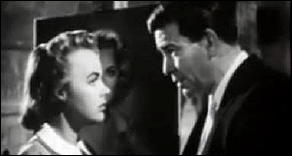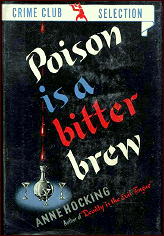Sun 1 Oct 2017
Archived GOLD MEDAL Review: STEPHEN MARLOWE – Homicide Is My Game.
Posted by Steve under Reviews[3] Comments
STEPHEN MARLOWE – Homicide Is My Game. Gold Medal #880, paperback original; 1st printing, May 1959.
After first appearing in a couple of nondescript titles – The Second Longest Night (Gold Medal #523, October 1955) and Mecca for Murder (Gold Medal #575, May 1956) – Stephen Marlowe’s private eye Chester Drum began showing up in two sequences of titles. The first group was perfectly designed to catch the eye of an adolescent teenager. Ask me how I know? I graduated from high school in 1959, I was one, and I had them all:
Murder Is My Dish. Gold Medal 658, March 1957.
Killers Are My Meat. Gold Medal 693, August 1957.
Violence Is My Business. Gold Medal 769, May 1958.
Terror Is My Trade. Gold Medal 813, October 1958.
Homicide Is My Game. Gold Medal 880, May 1959.
Danger Is My Line. Gold Medal 947, January 1960.
Death Is My Comrade. Gold Medal 986, April 1960.
Peril Is My Pay. Gold Medal 1018, July 1960.
Manhunt Is My Mission. Gold Medal s1116, May 1961.
Jeopardy Is My Job. Gold Medal s1214, May 1962.
Somewhere along the line Drum’s assignments began to take him more and more outside of the US, finding him working as a foreign agent in one guise or another. But the string of cases up above was interrupted briefly by a tour de force of considerable magnitude, Double in Trouble (Gold Medal d926, September 1959), co-authored by Richard S. Prather, in which Drum teams up with the former’s PI character, Shell Scott. Is this the first crossover/team-up between two series characters by separate authors in the same book? Let me know.
After a book entitled Francesca (Gold Medal k1285, March 1963), Drum began a new sequence of patterned titles in which (I believe) he worked only as an overseas operative. (This is not a new concept. While there were probably many others, Charles L. Leonard’s Paul Kilgerrin was also a private eye who also often did foreign intrigue duty. As you will recall, I read and reviewed one of his adventures, chronicled in a book called Sinister Shelter, not too long ago.)
Drum Beat – Dominique. Gold Medal k1508, 1965.
Drum Beat – Madrid. Gold Medal d1686, 1966.
Drum Beat – Erica. Gold Medal d1796, 1967.
Drum Beat – Marianne. Gold Medal d1909, 1968.
In the 1960s I was in college, and so I no longer was as able to keep track of the monthly Gold Medal titles as closely as I did in high school. Other than James Bond, I also gradually decided that wasn’t all that interested in spy stuff, and so I filled most of the Drum Beat’s into my collection later.
Do I remember most of the stories, the plot lines? Not really. I can pick almost any book that I read for the first time more than 45 years ago, and do you know what? It’s a brand new book. It’s as if I’ve never looked inside before.
Do books like this stand up? Sometimes. Sometimes not. Sometimes only in part. And this one’s a pretty good example.
Take the first couple of paragraphs. What could set the stage better than this?
She was jogging along the shoulder of the road through the rain, running the way a girl runs – her hands out and flapping like wings, her knees thrusting high in tight jeans, her feet kicking up gouts of muddy rain water. For a moment she was etched clearly against the night, then the thunder cracked and rolled, and the darkness swallowed her.
On one hand, this is pretty good. It sucks the reader right in. On the other hand, I’m now at an age where – this isn’t the only book that I’ve read that opens in very much the same way, is it?
The girl is running to get help for her brother. The two of them had been in a car that was forced off the road by another. Two men jumped out and began beating her brother up. Suffering from cerebral palsy, he was not able to defend himself. Luckily for Anita and Donny Fortune, the car that stops for her was being driven by a private detective, Chester Drum.
It is difficult to think of a sex-crazed teen-aged girl as being a relic, but as a relic of the days of 1950s and 60s paperback originals, that’s exactly what Anita Fortune is. From page 15:
The next thing I knew she had flung her arms around my neck and was rubbing against me. Her lips came so close they went out of focus. I turned my head so they landed on my cheek. What she’d had in mind wasn’t the kind of kiss she’d give to an uncle, but I had fifteen years on her, so I broke it up in a hurry. To top it all off, she had stirred me. She must have seen that in my face, for she said, “I never knew an older man would be so shy, either.â€
Whew. I read that, and I’m seventeen years old again myself. Unfortunately I never met any Anita Fortune’s when I was. If there were any around, maybe they were all looking for older men.
The brother Donny Fortune is a professional photographer, and (a) he seems to have something on somebody, and (b) he is trying to break up a secret deal and coverup that is going on in the town of Jefferson Courthouse, Virginia, just outside of Washington DC. Drum’s assistance to Donny’s sister gets him mixed up, as he says, “in it up to my crewcut.â€
One of the town’s more notable citizens, the owner of the local supermarket, as it had been discovered, had taken movies and pictures of unsuspecting teen-aged girls doing immoral things at the parties he commonly threw for girls working for him, taken, it is claimed, for his later viewing and enjoyment. (Anita was one of the girls.)
To spare innocent young girls the trauma of a trial, arrangements were made, with the connivance of the D.A.’s office and a US Senator, to send Linus Piper to Brazil. Don Sparrow was against the deal, however, for reasons no one knows, and when he later is found murdered, but Piper already in another country, with no possibility of extradition, there is no one to turn to but Drum, as a private citizen, to go down to Brasilia and do what he does best.
Take a deep breath. And of course he does. There is a lot of story in this slim novel (144 pages of small print), largely consisting of Drum fighting against the establishment, but you now have the essentials. And yet. Perhaps I should mention the march on the mansion by a mob of native Brazilians carrying torches, angered by the presence of a “sex deviate†in their midst. That’s a scene that might come back to mind every once in a while. Perhaps I should mention what was really in the photograph that Don Sparrow had, but I won’t, but by today’s standards, it is rather tame.
How Sparrow got the photo is a major question (in my mind) that is simply shrugged off. Why he was so incensed by it, well, perhaps you had to be there, back in the late 1950s, when life and the times were quite different from the way things are now. Luckily we still have handy little time capsules around, like this one.

